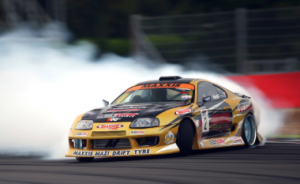Here you can find some projects that have been theme of investigation in our Lab. If you are interested in some of them, please contact us for more information.
Deep Learning for Texture Classification
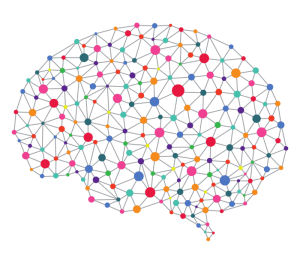
In this project we are investigating the use of deep learning techniques to classify different types of textures, such as wood, histopathological breast cancer, handwriting, etc . One of the main challenges is to deal with the large resolution of the images and also limited number of samples available for training. Data augmentation and patch-based classification are alternatives considered to overcome such a challenge. Coordinator: Prof. Luiz Eduardo S. Oliveira
Concept Drift
In non-stationary environments a classification problem may violate the common assumption that the data distribution and the learned concept do not change over time, characterizing the phenomenon of concept drift. Possible changes may occur in the distribution of the incoming data (virtual drift), or in the conditional distribution of the target concept, while the distribution of the input may stay the same (real drift). In this project we investigate different alternatives to detect and deal with concept drift. Coordinator: Prof. Luiz Eduardo S. Oliveira
Mobile Robot Localization and Navigation
We are developing algorithms for robot localization and navigation to be carried on embedded systems, based on the following platforms: Zedboard, Beagleboard with real-time Linux, Spartan-6 FPGA ML605, Cypress PSoC and netbook with Linux (Ubuntu). In the area of parallel and reconfigurable systems, we recently developed a Canny edge detector and now we are working in a FPGA-based SLAM. Our tests are performed using a a Pioneer 3DX mobile robot (photo), Kinect camera and a rolling shutter stereo home-made head. Related research topics include low-level interface between all platforms and Kinect, RobotOS, and Android. Coordinator: Prof. Eduardo Todt
Pedestrian Detection
An important application of computer vision derived from the mobile robotics is the pedestrian detection by processing of images acquired by cameras installed in vehicles. This type of system supports new forms of protection to users in the system considered fragile transit, pedestrians, providing alerts to the driver in case of risk of collision. The main objective of this project is to investigate new algorithms for detecting pedestrians through the processing of images for this feature is feasible to be applied, contributing to traffic safety. Coordinator: Prof. Eduardo Todt
Dissimilarity Pattern Recognition

The main objective of this project to investigate techniques of pattern recognition based on dissimilarity to solve problems with a large number of classes and a limited number of samples per class available for learning. The concepts of dissimilarity can be applied to problems of pattern recognition in two different ways. The first makes use of the dissimilarity matrix while the second uses the vectors of dissimilarities. The detailed study of these techniques is beyond the scope of this project. Furthermore, a comparative study between these techniques, as well as biological characterization with respect to the advantages and disadvantages of each is a goal of the project.
To validate the above ideas will be considered different types of applications where the number of classes is high and the number of examples of classes available for learning is limited. For example: writer identification, signature verification, authorship identification, and forest species classification. Coordinator: Prof. Luiz Eduardo S. Oliveira
GPU Based Distributed Stencil Computation
This project focuses on research and implementation of distributed stencil based computations using GPGPUs. Domain decomposition, dynamic load ballancing, inter/intra GPU communication and fault tolerance are some of the relevant subjects of this research. Main applications are fluid simulations on regular grids using Lattice Boltzmann or Navier-Stokes equations. Coordinator: Prof. Daniel Weingaertner
Parallel Image Processing
The goal of this project is to provide more efficient versions of Image Processing and Computer Vision algorithms/functions by exploiting the parallelism of these algorithms in multi-core CPUs and GPGPUs. Long term goal is the development of automatic efficient code generation using a Domain Specific Language. Coordinator: Prof. Daniel Weingaertner
Medical Image Processing
 The focus of this project is on Computer Aided Diagnosis (CAD) studies in the medical image processing field. CAD tools have been considered as a second opinion by physicians for example on detection and/or classification of abnormal structures in MRI images. Classification, registration techniques of MRI images, and classification of breast cancer histopathological images are the major interests of this research. Coordinators: Prof. Daniel Weingaertner, Prof. Lucas Ferrari de Oliveira, and Luiz Eduardo S. Oliveira
The focus of this project is on Computer Aided Diagnosis (CAD) studies in the medical image processing field. CAD tools have been considered as a second opinion by physicians for example on detection and/or classification of abnormal structures in MRI images. Classification, registration techniques of MRI images, and classification of breast cancer histopathological images are the major interests of this research. Coordinators: Prof. Daniel Weingaertner, Prof. Lucas Ferrari de Oliveira, and Luiz Eduardo S. Oliveira
Music Genre Recognition
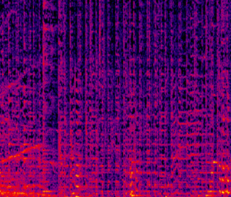
The main objective of this project is the investigation of new features and new methods for automatic classification of music based on content analysis of the audio signal of music.In particular we seek to explore new features for describing musical audio signals in conjunction with different machine learning algorithms that are better adapted to these characteristics, thus contributing significantly to the state of the art in computer music, and in particular, contribute to a computational approach, the best understanding of musical structures, especially in Latin and Portuguese music. Coordinator: Prof. Luiz Eduardo S. Oliveira
Forest Species Recognition
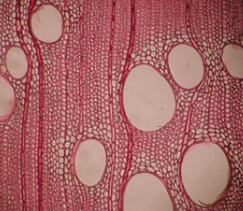
The correct identification of forest species is of vital need for the wood industry and it has several different applications. In the recent years with the advent of globalization the safe trade of log and timber has become an important issue. An example of application that can save millions of dollars, in this case, would be to prevent frauds where a wood trader might mix a noble species with cheaper ones, or even try to export wood whose species is endangered. The main goal of this project is to develop reliable algorithms to automatically classify more than 100 different forest species of the Brazilian fauna. This project is developed in collaboration with the Laboratory of Wood Anatomy of UFPR. Coordinator: Prof. Luiz Eduardo S. Oliveira
Handwriting Recognition
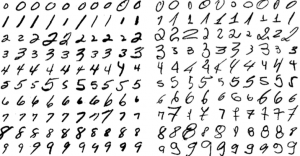 Handwriting consists of articial graphical marks on a surface and its purposes are to communicate something and also to expand the human memory. It is a skill closely related to the human personality, which explains its great variability. In spite of all this variability, by the time they are ve years old, most of the children can recognize digits and letters. Small characters, large characters, or rotated, all are easily recognized by the young. The characters may be written on a cluttered background, on crumpled paper or may even be partially occluded. We take this ability for granted until we face the challenge of teaching a machine how to do the same. After 50 years of research, design of a general handwriting recognition machine remains an elusive goal. In our Lab we are currently investigating different aspects of handwriting, such as segmentation and classification. Different applications such as string digit recognition, signature verification and writer identification have been studied under different projects. Coordinator: Luiz Eduardo S. Oliveira.
Handwriting consists of articial graphical marks on a surface and its purposes are to communicate something and also to expand the human memory. It is a skill closely related to the human personality, which explains its great variability. In spite of all this variability, by the time they are ve years old, most of the children can recognize digits and letters. Small characters, large characters, or rotated, all are easily recognized by the young. The characters may be written on a cluttered background, on crumpled paper or may even be partially occluded. We take this ability for granted until we face the challenge of teaching a machine how to do the same. After 50 years of research, design of a general handwriting recognition machine remains an elusive goal. In our Lab we are currently investigating different aspects of handwriting, such as segmentation and classification. Different applications such as string digit recognition, signature verification and writer identification have been studied under different projects. Coordinator: Luiz Eduardo S. Oliveira.

